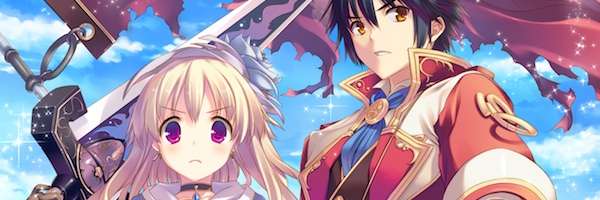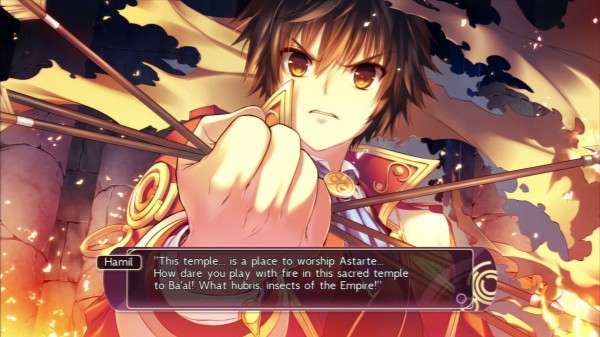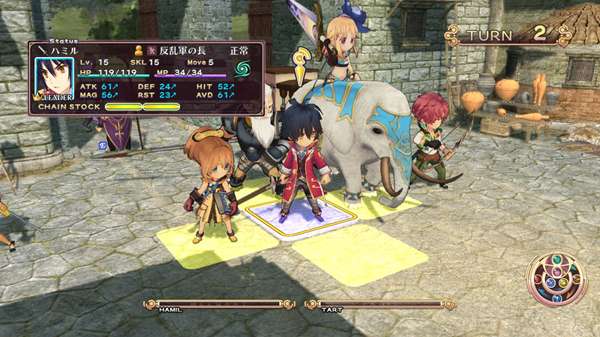
Tears to Tiara II: Heir of the Overlord PS3 Review
For as long as the genre has existed, the majority of RPGs, particularly JRPGs, have built their stories around the concepts of gods. Whether benevolent or malevolent, ancient or artificial, decades of JRPGs have featured stories centered around the revival of an ancient god that serves as either the final boss or the super-powered form of a party member. It’s the oldest cliché in the book, even older than dungeons and dragons and spiky-haired protagonists.
Tears to Tiara II: Heir of the Overlord gets some points for basing its entire story around gods; the Atlus-published RPG sequel (with its predecessor remaining exclusive to Japan yet sharing as much in common with its sequel as a Final Fantasy title) uses the central themes of religion to weave its tale of persecution, faith, and war in the name of its ancient gods. One notable aspect of Tiara’s tale of warring deities is that it gets its inspiration from the historical Punic Wars; after having their kingdom overthrown by the evil empire (the second longest running JRPG cliché), the citizens of Hispania are forced into heavy labor, taxation, and the abandonment of their chosen god Ashtarte. Hamil, the sole surviving heir of Hispania’s ruling family, is among those cruelly enslaved by the empire, but chooses a life of subjugation over rebellion in the hopes that he can prevent a bloody war that will doubtlessly claim the lives of his people.

One day, Hamil is approached by a young girl named Tarte, who claims to be the human incarnation of Ashtarte and deigns to help the people of Hispania reclaim their homeland. Eventually Hamil is thrust into the battle he desperately avoided, but also desires in order to free his people and enact revenge on the empire. What follows is a massively lengthy tale that deals with some surprisingly heavy topics such as religious persecution, regaining lost faith, and the balance between necessary brutality and shortsighted revenge.
It is crucial that the message rings loud and clear: Tears to Tiara II’s story is incredibly lengthy, spanning well over fifty hours and nearing dangerously close to a hundred. Despite its RPG trappings, the game eschews much closer to a Visual Novel, with talking portraits that exposit every single detail about the world around them for hours at a time. The upside to that is a well-written tale with interesting character development and a host of heavy topics typically overlooked in games of this nature. You still have your standard anime trappings including moe goddesses, buxom villainesses and transforming protagonists (complete with spiky hair and glowing aura), but those with the tolerance for an anime aesthetic and the patience for such a lengthy story may find themselves hooked all the way through to the end.

Lest it be forgotten, there is actual gameplay to be found in Tears to Tiara II. Taking an isometric Strategy RPG approach as seen in Final Fantasy Tactics and Disgaea, the game’s stages consist of turn-based battles between Hamil and his allies against the Empire’s armies (as well as random bats, rats and other monsters that always seem to hinder an adventurer’s progress). Character positioning is the key element in these battles, where attacking an enemy from behind may yield a more accurate attack versus a full frontal assault. A long ranged attack such as a bow or magic attack can prevent a damaging counterattack, but a riskier direct attack can result in greater damage. The combat is serviceable, but hardly distinguishable; if you’ve played an SRPG, you’ve played this. If anything, the combat stages are a merciful distraction after a lengthy cutscene, as they allow players to save their progress before, during, and after battles.
Which brings up the biggest criticism for Tears to Tiara II; while similarly-paced Visual Novels allow for saving progress at any time, Tiara II does not enjoy such freedom, only offering the ability to save at certain points. This brings back the importance of having a clear schedule, as many of the game’s cutscenes can go for as long as an hour or more uninterrupted. Had the game allowed for saving at any point, it would be much more manageable, but instead players who choose not to fast-forward or skip the dialogue (which is in its original Japanese language, by the way) will have to put up with lengthy story sequences that would put Hideo Kojima to shame.

In the end, Tears to Tiara II is a well put-together game that’s hard to recommend in the long run. Had the game chosen to either be a full-fledged Visual Novel with proper saving features or a more evenly-paced Strategy RPG, it would have gotten a higher recommendation. For those looking for a well-written adventure, the recommendation is still there, but with the added caution that you be prepared for a long haul with little interruption.
